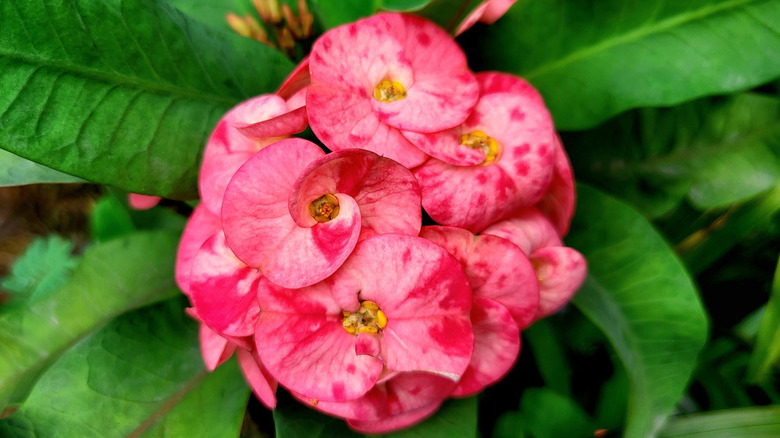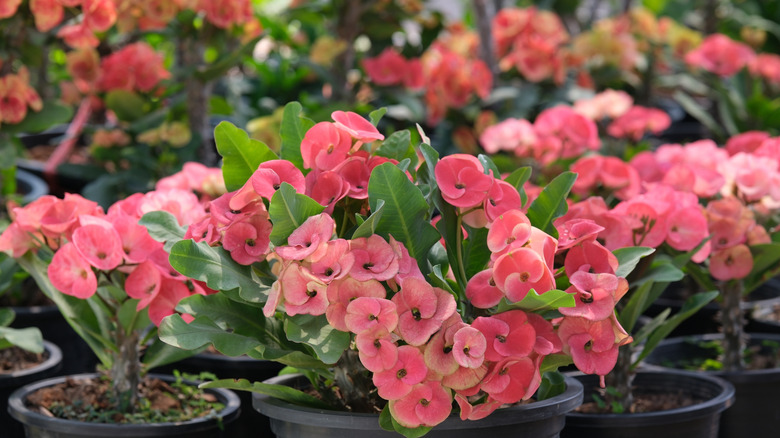Why Your Crown Of Thorns Plant Isn't Blooming
If you have a crown of thorns plant in your home, you'll know how easy it is to grow and how little attention it demands from you. It seems that placing it in a sunny window and giving it some water when the soil is dry is all it really needs. That is until it stops blooming, and suddenly you wonder what you've done wrong, even though you've followed all the instructions on how to grow and care for a crown of thorns plant. Although crown of thorns (Euphorbia milii) can flower reliably for most of the year, depending on your indoor environment, there are a few things that may prevent it from producing those colorful bracts that we think of as flowers. Mostly, lack of blooms is related to the amount of light your plant gets, incorrect fertilization, and dormancy failure.
To keep your crown of thorns plant happily blooming, it needs around six hours of sunlight daily. Putting your succulent near a bright window, especially one that receives morning sunshine, should be sufficient. However, at the other end of the scale, the plant also needs a period of darkness so that blooming can be initiated. This means that keeping your crown of thorns in a room that's brightly lit in the evening may reduce its ability to flower. As a side note, were you aware that this popular succulent is toxic to pets?
Other reasons your crown of thorns plant is not blooming
While adequate periods of bright light and complete darkness will provide your crown of thorns the ideal conditions for flowering, the type of fertilizer might also have a bearing on its ability to bloom. Essentially, crown of thorns should only be lightly fertilized every two or three months during spring and summer, with a special emphasis on using a balanced fertilizer, at half strength. If the plant receives a heavy dose of nutrients, especially excessive nitrogen, it will put on lots of vigorous growth at the expense of flowers. You should also note that this succulent is sensitive to certain micronutrients such as boron, so it's important to check the label on the product to ensure that it's suitable for your plant. Your best bet is to select a fertilizer that's specifically marked for cactus use.
Another thing you want to do to encourage blooming is to keep your plant a little pot bound, as this keeps the root system quite compact. Finally, even though this is one of the best houseplants to have if you live in a warm climate, you do want to vary the temperatures your crown of thorns is exposed to during its growth cycle. It should experience slightly cooler temperatures in the fall and winter, as this will help it to go dormant. Less water at this time is also important. Then, when the temperature starts to rise again in spring, your crown of thorns should reward you with new blooms.

